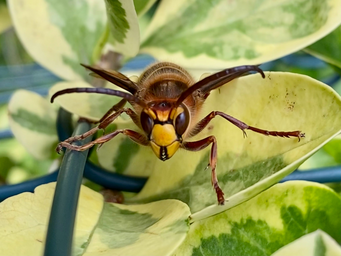In the fall of 2019, it was discovered that giant Asian hornets had made their way from Asia to the U.S. Despite what many would assume from their name of “murder hornet,” the giant Asian hornet does not murder humans intentionally. Instead, the hornet is a huge risk to our bee populations. Nonetheless, humans are not completely safe from their wrath. In an article by the New York Times, a beekeeper detailed coming across a hive with thousands of bees decapitated. At the time he had no idea that the responsible party would be the hornets from across the way.
According to National Geographic, the giant Asian hornet is equipped with large mandibles used to separate the heads of bees from the body. The body is then taken back to the colony to feed their young. This is discerning for scientists because bee populations are already at risk in the U.S. The other fear is that they may attack humans. Although the “murder” in their nickname is meant to apply to the bees they kill, they are still guilty of taking human lives. In Asia, they kill about 50 people every year.


Now the hunt is on for any hornet that could be the guide to the hive. Time is of the essence in this operation because the giant Asian hornets can completely slaughter an entire hive of bees in just 90 minutes. The honeybees in the U.S. have no known defense against the hornets since they are not their natural predator here. The honeybees in Japan, however, have developed a way to protect themselves. They swarm around the hornet and beat their wings until the temperature within the swarm reaches temperatures above 115 degrees. This essentially cooks the hornet. This lack of protection for American honeybees is another reason for quick action.
Scientists are laying out traps in the hopes of catching the queen or any workers. These are often makeshift traps because traps typically used for bees and wasps have holes too small for the giant hornet. The traps typically consist of jugs with large holes and something sweet. Examples include orange juice with rice wine, experimental lures and more. Other potential strategies include using thermal tracking to locate the hive or using auditory tools to detect the humming sounds that would come from their dwelling. It is unclear what will happen in the future, but scientists hope to resolve this issue within a few years.
Want to see more HCFSU? Be sure to like us on Facebook and follow us on Instagram, Twitter, TikTok and Pinterest!



